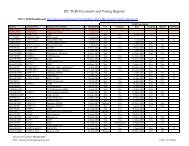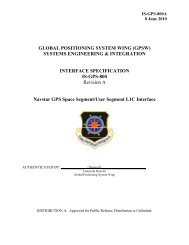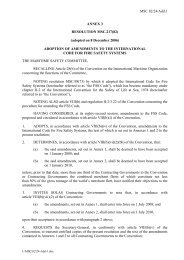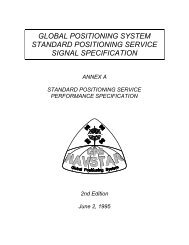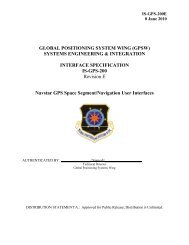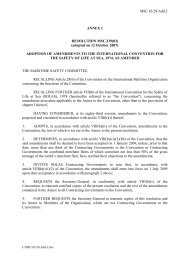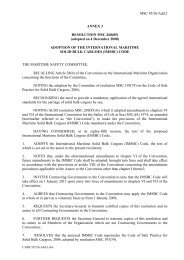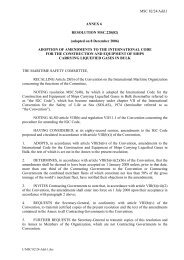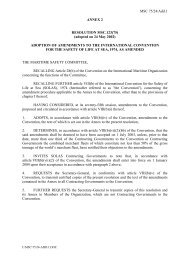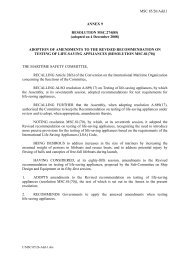The LORAN-C System - US Coast Guard Navigation Center
The LORAN-C System - US Coast Guard Navigation Center
The LORAN-C System - US Coast Guard Navigation Center
You also want an ePaper? Increase the reach of your titles
YUMPU automatically turns print PDFs into web optimized ePapers that Google loves.
Table II_5 provides an excerpt of a Loran-C Correction Table for theNE<strong>US</strong> (9960) chain and master-Whiskey station pair. This page covers anarea off the mouth of the Delaware Bay between latitudes of 36 0' N and39 0' N, and longitudes 74 0' W and 75 0' W. Large land bodies andareas outside the CCZ are represented by blank spaces on the pages (seeTable II_5).ASF corrections given in this table are to be applied to the measuredTDs, and can be positive or negative. Negative values are prefixed witha minus (_) sign, while positive values are shown without sign. In somecases, a negative sign precedes a zero value; this results fromrounding off a value slightly less than zero and indicates the trend ofthe correction.Use of TablesAccording to DMAHTC,ASF tables are published primarily for precision navigators who utilizeelectronic computers to convert Loran-C time differences to geographiccoordinates.<strong>The</strong>se tables can also be used by navigators using manual plottingmethods for Loran-C navigation.ASF corrections are typically small (no more than 4 usec), but can besignificant for precise navigation, a point illustrated below.<strong>The</strong> ASF correction table can be entered by using the vessels deadreckoning (DR) position, indicated loran position, or positiondetermined by other means. ASFs are added algebraically to the measured(observed) TD of the station pair. For example, suppose that the vesselwere located at the approximate position 39 0' N and 74 30' W, and thatthe ASF for the Whiskey station pair were desired. From Table II_5 itcan be seen that the ASF is _0.9 usec. Thus, in this instance 0.9 usecshould be subtracted from the observed TD to obtain a corrected TD.ASF corrections should be used with caution for areas within tennautical miles of land (coastline effect) and should not be used withcharts that provide a corrected lattice.Care should be taken to ensure that the correct table (hence chain) isused, and that the correction station pair is considered. Table II_6,for example, shows how the ASF correction (for the same latitude andlongitude used in the above illustration) varies with the secondarystation and chain. Assuming the location given, the correctionappropriate for the X-ray secondary in the 9960 chain would be 2.9usec, compared to only 0.3 usec if the 8970 chain were used. It isparticularly important to use the right table (correct chain andstation pair) when determining ASF corrections.Lest the reader conclude that all this emphasis on refined calculationsis much ado about nothing, the accuracy of the predicted LOP is a keydeterminant of the accuracy of the loran position. Loran-C accuracy and




